Original Polish Soups — top 17 soups from Poland
Here comes a list of modern and traditional Polish soups. Under their descriptions, you can find some authentic recipes. Going to visit Poland? Would you like to taste some delicious foods not choosing on spec? You are welcome. All Polish foods listed below constitute a typical Polish menu even today. Therefore, while visiting Poland, one will certainly come across many of them. I wish you good luck in exploring Polish tastes and… Smacznego!
Zur aka Zurek • Zurek soup / Polish sour rye soup
in Polish: żur, żurek ♫
Zurek or zur is a very traditional Polish soup. A distinctive feature of this exclusive food is its sour taste. However, this is not like the sour taste of lemon. Zurek is much more delicate and extremely palatable. The taste of this Polish soup comes from so-called sour leavening, originating from fermentatedrye flour and bread crumbs.
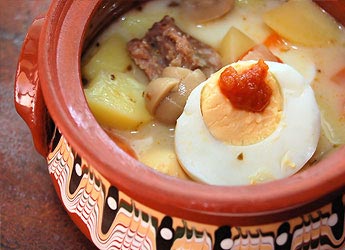
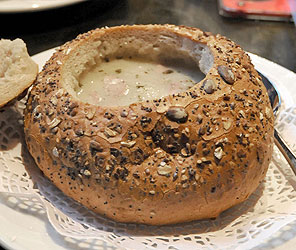
In many Polish homes zurek soup is a traditional food eaten during Easter holidays. The dish is very nutritious and quite lavish. Oftentimes, Polish zurek soup is dished up in a special hollowed out loaf of bread (see photo below). Compulsory additions to zurek soup are hard-boiled eggs and a peculiar Polish raw sausage. The sausage is called white sausage by the Poles (biala kielbasa in original) and is boiled in water before being added to zurek soup. Since the Central European region of Poland and Germany is the homeland of many kinds of sausages, white sausage is quite unknown outside borders of these countries. To sum up, both egg and Polish kielbasa are thrown into a plate with zurek soup. Smoked bacon or ribs are another popular extra. This great Polish soup is often eaten with some bread or roll. It is worthwhile mentioning that the white borscht is a closely related soup. You can find some information about it in the next paragraph.
"The sour rye soup is a soup made of soured rye flour and meat (usually boiled pork sausage or pieces of smoked sausage, bacon or ham). It is specific to Poland, where it is known as zur or zurek, and a variant is known as barszcz bialy (white borscht)." — Wikipedia
Barszcz czerwony • Red beet borscht / Beetroot borscht
in Polish: barszcz, barszczyk (diminutive), czerwony ♫
Barszcz czerwony is known in English as beetroot clear borscht, while Polish expression barszcz czerwony simply means red borscht. This traditional Polish soup is made of red beetroot juice. The most typical and very traditional red borscht is served with uszka (read like ushka), a kind of stuffed dumplings very similar to Italian ravioli. Soups of this kind should be clear and look like a red wine. Red clear borscht with uszka is one of the best traditional Polish soups and an exclusive one. It is also an indispensable Polish dish prepared for the Christmas Eve supper. Red borscht has a rich bouquet. However, the taste of red beet dominates with its characteristic delicate flavor of natural sweetness.
Another kind of red borscht soup is served with krokiety (croquettes) instead of uszka. The soup should be slightly sour in taste and usually not so clear as Christmas borscht. Traditional Polish recipes suggest adding some lemon juice or vinegar. Personally, I prefer eating the slightly sweet clear Christmas borscht rather than the sour one with krokiety.
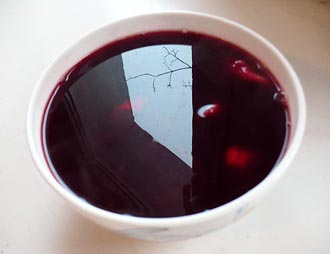
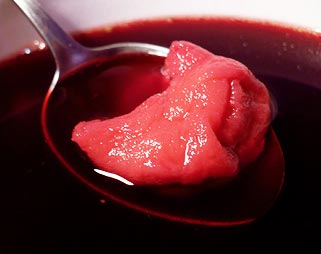
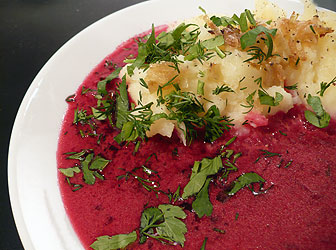
The third version of this delicious Polish soup is a red borsch with cream. This is one of those Polish soups I especially enjoy. Red borscht with cream is made just like clear red borscht but with some sour cream. Cream is used to thicken food, like in many other Polish soups recipes. Moreover, this nourishing meal is dished up with mashed potatoes, sprinkled with some fried onion or pork scratching. Yummy!
"Other versions are richer as they include meat and cut vegetables of various kinds where beetroots aren't the main one (though this soup isn't always called barszcz, but rather beetroot soup). This variation of barszcz isn't strained and vegetable contents are left in it. Such soup can make the main course of obiad (main meal eaten in the early afternoon)." — Wikipedia
Barszcz bialy • White borscht
in Polish: barszcz, biały ♫
White borscht is a Polish soup closely related to zurek. Although the taste is quite similar, it is pretty easy to distinguish white borscht from zurek. The first soup is brighter and almost always served with mashed potatoes sprinkled generously with bacon crackling, some fried onion, dill or parsley leaves and laid on a separate plate. The taste of this traditional Polish soup is delicate and very original. Just like zurek, white borscht is a bit sour. In this case, however, the sour taste comes from sauerkraut juice. This Polish soup is always thickened with wheat flour (in the case of a traditional zurek soup, rye flour is an thickening agent).
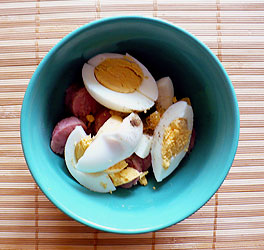
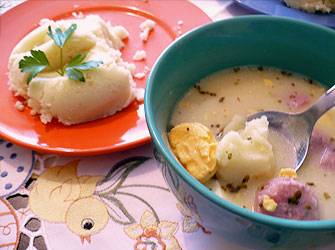
traditionally served during Easter breakfast. Photos by TastingPoland.
Chlodnik • Cold borscht
in Polish: chłodnik
Chlodnik is a soup known both in Polish and Lithuanian cuisine. Actually, this Polish-Lithuanian soup is yet another kind of red borscht. Red beet juice is the basic ingredient of chlodnik, and this is why the soup has a beautiful pink color. Just like a well prepared red borscht, chlodnik is a delicious Polish food. This soup has a delicate sour-sweet taste. Sweetness originates from natural sugar content in beetroot, whereas the addition of some sour milk, kefir or yoghurt brings a sour flavor about.
Besides the beetroot, sour cucumbers and young beet leaves are common ingredients of a chlodnik soup. The fact that this Polish soup is dished up cold is an unique feature. Actually, the name of this soup derives from a word chlod (in fact "chłód") that means coolness. As such, chlodnik is usually prepared and served during hot summers.
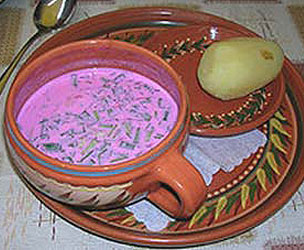
"Its preparation starts with young beets (…). After cooling down, the soup is usually mixed with sour cream, soured milk, kefir or yoghurt (…). Typically, raw chopped vegetables such as radishes or cucumbers are added and the soup is garnished and flavored with dill or parsley. The soup has a rich pink color." — Wikipedia
Flaki aka Flaczki • Flaki soup / Polish beef tripe soup
in Polish: flaki, flaczki (diminutive)
Flaki is a very popular traditional Polish soup. Flaki soup is quite dense and made from shreds of beef stomach. This is why the word flaki simply means in Polish 'guts'. No matter how oddly it sounds, believe me that the Polish flaki soup is really tasty. Even some Poles, however, do not give enough credit to these shreds, and they confine themselves to eating a mere stock. Since the latter is an aromatic extract of this nice traditional Polish soup, it is absolutely delicious. As for it, almost nobody has any doubts. Like other Polish soups, flaki is spicy and should be eaten with fresh bread or with a roll. I need to add that beef tripe soups are not only Polish food or a Polish cuisine specialty. These are well-known in other European cuisines, too. more
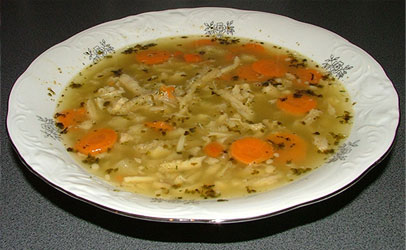
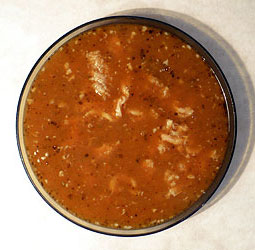
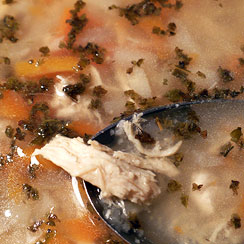
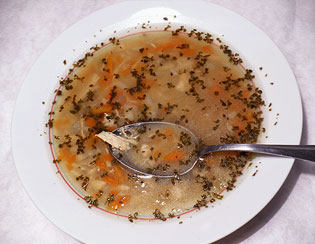
"The dish dates back as early as the 14th century, when it was one of the favorite dishes of King Władysław II Jagiełło. The method of preparation may vary slightly depending on the region. Common ingredients include beef tripe, beef, bay leaf, parsley, carrot, beef broth, and spices to taste, including salt, pepper, nutmeg, paprika, and marjoram." — Wikipedia
Rosol • Polish chicken broth
in Polish: rosół ♫
One of the most important traditional Polish soups is rosol. Rosol, a kind of Polish broth, is a not-thickened clear soup made with chicken meat and bones. Usually, the Poles serve this food with a pasta of the tagliatelle type. Sometimes rosol is dished up with a home-made traditional Polish pasta called kluski or makaron. For many years, rosol was being considered a sort of noble soup. Hence, on account of a respect for the Lord's Day, Polish chicken broth was served at Sunday dinner in many Polish families. This broth, rosol, is certainly a national Polish dish. This soup originally rose as the effect of long-term cooking of meat which a long time ago was preserved by salting and drying. They called this stock rozsol, which meant 'make less salty', hence its Polish name.
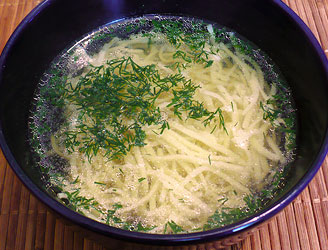
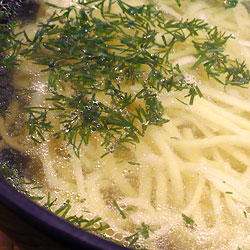
Polish broth is a dish which is being prepared for a relatively long time. At first fowl along with the combination of vegetables known in Poland as "wloszczyzna" is being cooked. In order to make a tasty and thick Polish broth one should begin by cooking with cold water, slowly leading to boiling temperature. Such a way of cooking makes the majority of ingredients, meat and vegetables, to be extracted to stock, which after seasoning becomes a broth.
For a lot of years rosol was considered to be a kind of a noble soup and on account of the respect for the Lord's Day – Sunday, broth was traditionally served on that day in most Polish families. Today this tradition isn't cultivated anymore in all Polish homes, also because of the long time required by the preparation of the broth.
Zupa grzybowa • Polish mushroom soup
in Polish: zupa grzybowa
Polish soups made from mushrooms are treated with a great respect by the Poles. One of the many splendid Polish mushroom soups is known as mushroom borscht (barszcz grzybowy in Polish) and, according to tradition, it is served for the Christmas Eve supper. All Polish mushroom soups are cooked on meat and vegetable stock. Still, mushrooms dominate both a list of ingredients and a bunch of tastes and aromas of the resulting Polish food.
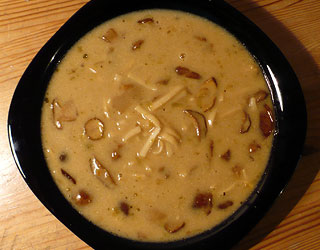
To describe the taste of a mushroom soup is quite a difficult task. It has… well, a mushroom taste and, generally speaking, if any one likes mushrooms, they will be enraptured by Polish mushroom soups. All the more so because, as usual, Polish cuisine offers you many choices: there is a soup made from boletus, red pine mushroom, and even one made from excellent chanterelle mushroom (those little, yellow mushrooms you probably know). Polish soup made from white mushrooms, that are easy to find in almost every grocery store, is a more common version called white mushroom soup or zupa pieczarkowa in Polish. Also, you may be interested in Polish mushroom sauces. These are described in the section devoted to Appetizers and ingredients.
Zupa ogorkowa • Polish cucumber soup
in Polish: zupa ogórkowa ♫
Cucumber soup is a traditional Polish soup. Neither refined nor festive, this Polish soup is quite an everyday soup. It is cooked on meat stock, while grated sour pickled cucumbers (typically Polish) and diced boiled potatoes constitute the foundation of the taste. Personally, I am not very fond of this Polish food. However, drawing on my knowledge of what many people from Poland consider to be good food, I should add that my statement is rather an exception, since everyone seems to like the Polish soup made of cucumbers ;)
Zupa / barszcz szczawiowy • Polish sorrel soup / borscht
in Polish: zupa szczawiowa
I strongly recommend you this great Polish recipe: the sorrel soup. I really love it. It is made from sorrel – small green leaves growing wild here and there on meadows and in the suburbs. It is interesting that if you want to cook the sorrel soup you will have to go for a walk to the lap of nature first and pick some of these plants. Indeed, I must admit that it is possible to buy the sorrel in some Polish groceries during spring & summer time, but choosing the easy way out, you rob yourself of all the fun ;) The sorrel looks somehow similar to spinach, but its taste is totally different. A great point in it is that sorrel leaves are sour in a pleasant and delicate way. It is possible to eat these leaves raw even during your stroll.
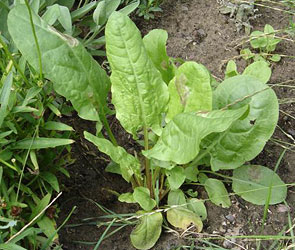
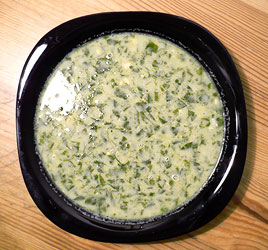
This Polish soup is a delicious one. Let me tell you about it. It is cooked on meat stock. Then some boiled potatoes (if you want) and hard-boiled eggs (recommended) are added to the stock. Some people cook the sorrel soup on smoked meat, claiming that it tastes even better. I don't doubt it, however, I have to date not had the chance to try such a recipe on my own. One more thing: this Polish soup is called borscht, not soup, by many Poles.
Kapusniak and kwasnica • Polish cabbage soup and Sauerkraut soup
in Polish: kapuśniak, kwaśnica
A cabbage soup is a tasty dish known in Polish, Slovak and Ukrainian cuisine. This soup is prepared from a blend of a raw cabbage and sauerkraut. In the Tatra Mountains region the cabbage soup is made exclusively from sauerkraut, and as such it is called kwasnica. This regional Polish soup is much more tart than a typical kapusniak, the name of which derives from the word kapusta, meaning cabbage. Kapusniak is usually prepared on bacon or ribs stock, oftentimes with an addition of some diced sausage. Both Polish soups are sour, but less than the mere sauerkraut. Sometimes Polish cabbage soup is seasoned with a tomato bouillon, which renders its color slightly orange or red.
Zupa koperkowa • Polish dill soup
in Polish: zupa koperkowa
The Poles 'worship' dill and parsley leaves, profusely used to decorate and season many Polish foods. This worship finds its climax in the dill soup. This traditional Polish soup has – I want to underline that – a very delicate taste (it can be nauseous when prepared too guardedly). Polish dill soup is an essence of the taste of fresh dill, with the addition of some good quality cream. This Polish soup is a seasonal one, typical of spring-summer time, since this is a period of a year, when the Polish lady of the house gracefully gathers the dill from her garden :) (of course I mean these ladies who are lucky enough to have such a garden, which, to my great disappointment, is always rarer these days!).
So, the fresh dill gives the soup lots of the unique taste and some wonderful flavor. Personally, I really love it. Many variations of the dill soup exist. Like most of the Polish soups, this one also is cooked on meat stock. The dill and cream are both a base for its taste. However, depending on the home and family tradition at stake, we come across some different additions: the dill soup served with batter dumplings, potatoes, zacierki (kind of very small Polish dumplings), grzanki (pieces of bread or roll baked like a toast), or even regular pasta. Sometimes diced chanterelle mushrooms, typical for some of Polish dishes, are an addition that gives to the soup a nobler taste.
Krupnik • Polish barley soup
in Polish: krupnik
A barley soup is a traditional Polish soup cooked on vegetable or meat stock with barley groats as a base for the taste. Sparse dried mushrooms or meat chunks are sometimes added.
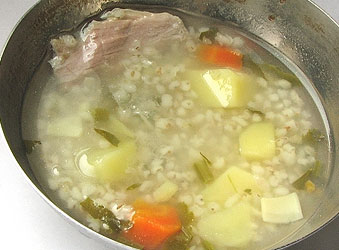
Czernina aka czarnina aka czarna polewka aka juszka • Polish duck blood soup
in Polish: czernina ♫, czarnina, czarna polewka ♫, juszka
Czernina also known as czarnina, czarna polewka, juszka and czarna zalewajka is an Old Polish soup, based on broth and blood of duck, chicken or rabbit (in past also goose). This may sound repulsively for some, though the soup remains an important part of Polish cuisine, and has its ardent lovers. In Old Polish tradition, the blood was acquired by incision of the previously plucked neck, while pressing duck beak (to the neck). The blood was collected in a bowl with vinegar with vigorous stirring, which protects it against clotting. This traditional method gave fresh blood of the highest quality and guaranteed best taste sensations. However, the duck is alive (should be stunned, though), and that is why the method may seem controversial. Nowadays, most Poles who do not have access to live poultry, buy duck blood from a trusted farmer or in butcher shops in form of a frozen product, since freezing preserves the quality and nutritional values.
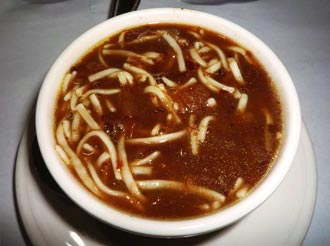
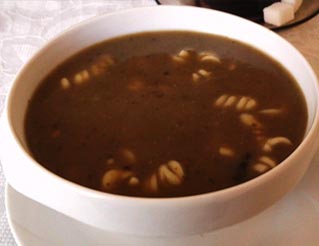
According to some Peoples, czernina is one of the best traditional Polish soups – also very natural one. Czernina is characterized by a sweet-sour taste, coming from the addition of sugar and vinegar. Other ingredients depend on the particular recipe and are as follows: dried fruits like pear, prunes, apple, cherry, raisins or apricot, as well as mead and syrup from pears in vinegar or plums in vinegar (another Polish specialties). Czernina is served with noodles, boiled potatoes or pyzy although home-made pasta is preferred. It is worthwhile to prepare czernina in larger quantities, because the soup heated repeatedly gets even better.
Zupa owocowa • Polish fruit soups
in Polish: zupa owocowa
Quite a lot of simple recipes for fruit soups exist in the Polish cuisine. Oftentimes fruit soups are sweet Polish soups made during the summer from fresh morello cherries, bilberries or strawberries. Some Polish people thicken fruit soups with cream or milk mixed with flour, but this is not a rule. These Polish soups, also known in some other cuisines of Slavic countries, are served cold and with an addition of pasta. During the winter fruit soup can be prepared from compote (a kind of Polish drink) instead of fresh fruit.
"Cold and warm fruit soups are common in Scandinavian, Baltic and Eastern European cuisines, while hot fruit soups with meat appear in Middle Eastern, Central Asian and Chinese cuisines. Fruit soups are uncommon or absent in the cuisines of the Americas, Africa and Western Europe. They are also not seen in Japan, Southeast Asia or Oceania." — Wikipedia
Zupa pomidorowa aka Pomidorowka • Tomato soup
in Polish: zupa pomidorowa, pomidorówka
A tomato soup, known in Poland as zupa pomidorowa or even more simply pomidorowka, is a soup of an Italian origin, which has been popular in Poland for many years. Together with a cucumber soup, barley soup, whether Polish broth - rosol, pomidorowka is another basic Polish food amongst simple, everyday soups.
In Poland pomidorowka is cooked on meat stock (poultry or beef). Fresh tomatoes are a base of the taste, while during the winter tomatoes preserved in jars are great substitutes. An addition of a tomato concentrate and cream emphasizes its taste. Polish tomato soup is served with pasta, but also frequently with rice or potatoes.
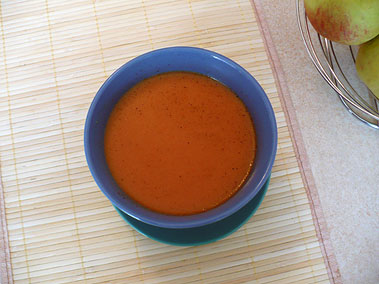
Zupa grochowa aka Grochowka • Pea soup
in Polish: zupa grochowa, grochówka
A pea soup is a universal multinational soup, known in many countries. In Poland the pea soup is prepared from pea and cooked with bacon on beef stock. Garlic and a marjoram are the most important spices. Depending on the original recipe, the Polish soup grochowka can be anything from semi-transparent and thin, to a very dense mousse soup. Pea soup is dished up with pasta, cubes of baked bread called grzanki or with groszek ptysiowy – small balls made of very light dough (similar to what is known in English as choux pastry balls).
What is interesting is that in Poland grochowka is often thought of as a military soup, because it has been served in army in the times of Communism. Even today, allegedly for the sake of tradition, pea soup is served during army or charity events. Since it is a very nourishing and hearty soup, pea soup is prepared and eaten on a large scale.
Zupa gulaszowa • Goulash soup
in Polish: zupa gulaszowa
This delicious soup comes from the Hungarian tradition and has been popular for decades in the Polish cuisine. Both in the Polish and Hungarian cuisines, the basic ingredients of this soup are: peppers, meat and onion.
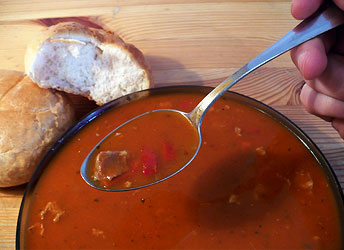
Barszcz ukrainski • Ukrainian borscht
in Polish: barszcz ukraiński
An Ukrainian borscht – as its name indicates – is a traditional Ukrainian soup made from red beetroot. Typically Polish red borsches are served clear, with croquettes or uszka, sometimes thickened with cream. As a rule Polish cuisine flinches from any vegetables in the borscht. And that is the essential difference between Polish red borscht (see above) and Ukrainian borscht, which is always rich in vegetables. An eastern tradition teaches us that the Ukrainian borscht is a vegetarian soup. Nevertheless, when served in Poland (as a Polish 'version') the soup is always based on meat stock. Oftentimes, the Poles brew it with an addition of pea or beans which, as far as I know, is not done in Ukraine. And that is the second difference between the original soup and its Polish version.
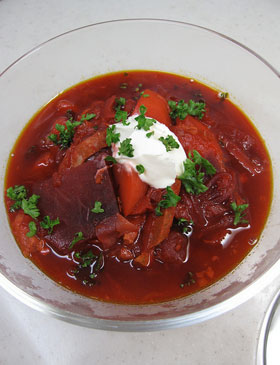
To this day there are arguments over who invented borscht. Ukrainians are certain that it is their traditional food. But this is exactly what Poles, Lithuanians, or even Romanians think as well. Well, we do not know the true origins of the borscht, but does this even matter? All types of borscht are delicious, and that's what really matters. more